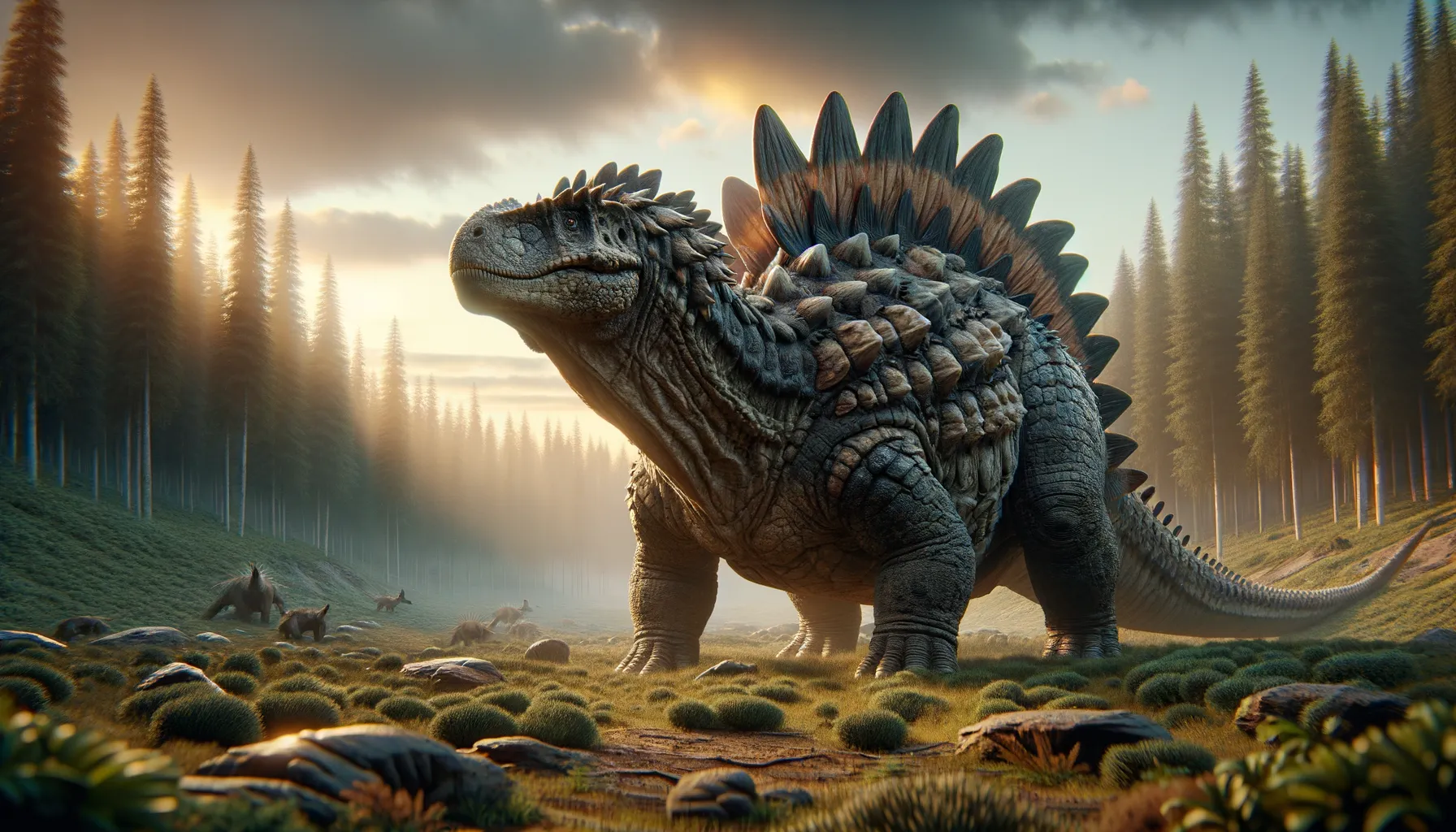
Oohkotokia
A walking tank of the prehistoric era!
Period
Cretaceous
Length
About 6 meters long.
Height
Nearly 1.5 meters tall.
Weight
Approximately 2 tons.
Oohkotokia is an armored dinosaur from the Late Cretaceous period. This dinosaur is part of the ankylosaur family, known for its thick, bony plates that protected it from predators. With its robust body and defensive adaptations, it roamed North America around 70 million years ago. Fossil evidence suggests it was well-adapted to its environment, thriving in what is now the northern United States.
Diet
Oohkotokia was herbivorous, primarily feasting on low-lying plants and ferns. Its diet likely included a variety of foliage found in its Cretaceous habitat. Its teeth were adapted for grinding and chewing tough plant material.
Hunting
As a herbivore, Oohkotokia did not hunt; instead, it foraged for food. It relied on its keen sense of smell to locate rich patches of vegetation. Its heavy armor served to deter predators rather than pursue prey.
Environmental challenges
Oohkotokia contended with a dynamic environment that included shifting climates and competition for resources. Seasonal changes would have affected plant availability, requiring adaptation to varying food supplies. Predators, such as tyrannosaurs, posed constant threats, necessitating its armored defenses. Natural events like floods could have also reshaped its living conditions, impacting its forage areas.
Speed
Slow-moving due to its heavy armor.
Lifespan
Estimated to be around 70 years.
First discovery
Discovered in Montana, U.S. in 2011.
Fun Facts
- Oohkotokia was a dinosaur that lived around 77 million years ago during the Late Cretaceous period.
- Its name, Oohkotokia, comes from the Blackfoot language, meaning 'large hammer', likely referring to the bony tail club it possessed.
- Oohkotokia was an herbivorous dinosaur, meaning it primarily fed on plants.
- This dinosaur is part of the ankylosaur family, known for their armored bodies and club-like tails.
- Fossils of Oohkotokia were found in what is now Montana, United States.
- Despite its heavy armor, Oohkotokia was relatively small, measuring about 15 feet in length.
- The discovery of Oohkotokia has helped scientists understand more about the diversity of ankylosaurs in North America.
Growth and Development
From hatchling to adult, Oohkotokia went through significant growth stages. The development of its armor was crucial, gradually forming as it matured. Juveniles likely stayed close to adults for protection and learning survival strategies. Fossil growth rings suggest that, like modern reptiles, it experienced periods of rapid growth followed by slower phases.
Habitat
Oohkotokia inhabited lush, forested areas with abundant plant life. These environments provided both nourishment and camouflage from predators. The landscape included river systems and floodplains, which were integral to its ecosystem. Such habitats supported a diverse range of species, creating a complex web of interactions.
Interaction with other species
Oohkotokia coexisted with various dinosaurs, including other herbivores and formidable carnivores. It maintained a mostly defensive posture, relying on its natural armor rather than aggression. Its presence in the ecosystem contributed to the balance, as it assisted in plant regulation. Possible interactions could have included competing with other herbivores for limited resources, creating niches within its habitat.
Natural lifespan
It could naturally live up to 70 years in the wild.
Reproduction
Reproduction was likely oviparous, with females laying eggs in nests. Careful selection of nesting sites would have been essential to ensure the young's safety and warmth. Parental involvement after hatching may have varied, with some level of protection provided to juveniles. Fossilized nests, if found, could offer insights into their reproductive habits.
Social behaviour
Oohkotokia may have lived in small groups or alone, depending on resource availability. Social interactions could have included mutual protection strategies against predators. Herd-like structures would have provided a strategic advantage in monitoring threats. Dominance hierarchies may have determined access to resources during scarce periods.
Fossil locations
Oohkotokia fossils have primarily been found in Montana, USA. The specific sites include the Judith River Formation, known for its rich Cretaceous deposits. These findings are significant as they expand knowledge of ankylosaurs in North America. Continuing discoveries in the region may provide deeper insights into its ecology and evolutionary history.
